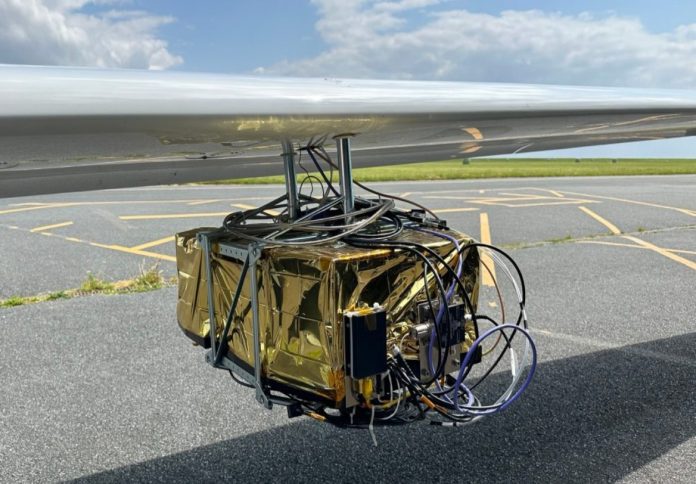
A new study has found that methane emissions from an open-cut coal mine in Queensland’s Bowen Basin could be up to eight times higher than previously reported.
Published in Environmental Science and Technology Letters, the research examined emissions from the Hail Creek coal mine, highlighting potential discrepancies in industry-reported figures.
The study, conducted by an international team led by the United Nations Environment Programme’s International Methane Emissions Observatory (UNEP’s IMEO), included researchers from UNSW Sydney.
Using aircraft-mounted instruments, the team measured methane plumes downwind of the mine in September 2023 and compared the results to the emissions figures reported by the mine’s operator for the 2023 financial year.
“Our airborne measurements are further evidence that emissions from the mine are not well-captured using state-wide emission factors,” said UNSW co-author Dr Stephen Harris from the UNSW ESSRC Greenhouse Gas (GHG) Measurement team.
The findings indicate that, if sustained throughout the year, methane emissions from the mine could be three to eight times higher than those reported under the National Greenhouse and Energy Reporting (NGER) framework.
According to the university, the research is the first to successfully verify reported emissions from an open-cut coal mine in Australia using this method, underscoring the need for independent verification and more precise emissions estimation techniques.
“The results support phasing out these generic reporting methods in favour of more advanced, mine-specific coal gas content modelling for open-cut coal mines in Australia,” Dr Harris added.
Methane is a potent greenhouse gas, more than 80 times more damaging to the climate over 20 years than carbon dioxide.
In 2022, Australia joined the Global Methane Pledge, committing to reducing methane emissions by at least 30% below 2020 levels by 2030.
Given that coal mines account for approximately one-third of fossil fuel methane emissions, improving measurement accuracy is crucial for meeting these targets.
UNEP’s IMEO aims to equip policymakers and industry with reliable data to track and mitigate emissions.
The airborne method used in this study presents an opportunity to validate emissions data reported under Australia’s NGER framework and refine the national approach to estimating fugitive methane emissions from open-cut coal mines.
“Atmospheric chemistry observations recorded using aircraft- or satellite-based platforms, as well as other ground-based monitoring systems, are important for quantifying the true emissions from coal mines,” Dr Harris said.
“These data highlight the potential for the coal sector to measure, verify and mitigate its methane emissions,” he noted. “Reducing methane emissions is a fast, cost-effective way to slow global warming in the near-term.”
The Bowen Basin, where the Hail Creek mine is located, plays a key role in global steel production, as it produces nearly all of Australia’s metallurgical coal.
Researchers argue that managing fugitive methane emissions from metallurgical coal extraction could offer a cost-effective way to reduce the steel industry’s climate impact.
“There is so much potential for the steel supply chain to step up, rein in its methane emissions, and have a real impact on climate in the coming years,” said Manfredi Caltagirone, Head of IMEO.
However, achieving this requires accurate data. “We need better, verified data like those in this study to seize this mitigation opportunity,” Mr Caltagirone added.
UNSW Associate Professor Bryce Kelly, who has mapped methane emissions throughout Australia since 2014, emphasized the importance of precision in emissions reporting.
“This case study highlights how atmospheric chemistry observations can guide the refinement of current coal-core-based methods for estimating methane emissions from open-cut coal mining,” he said.
“We need precise, reliable data to guide efforts to curb atmospheric pollution and slow climate change,” A/Prof. Kelly added. “This IMEO study has demonstrated a robust approach that can be used throughout Australia to identify reporting anomalies as well as mitigation opportunities.”




















